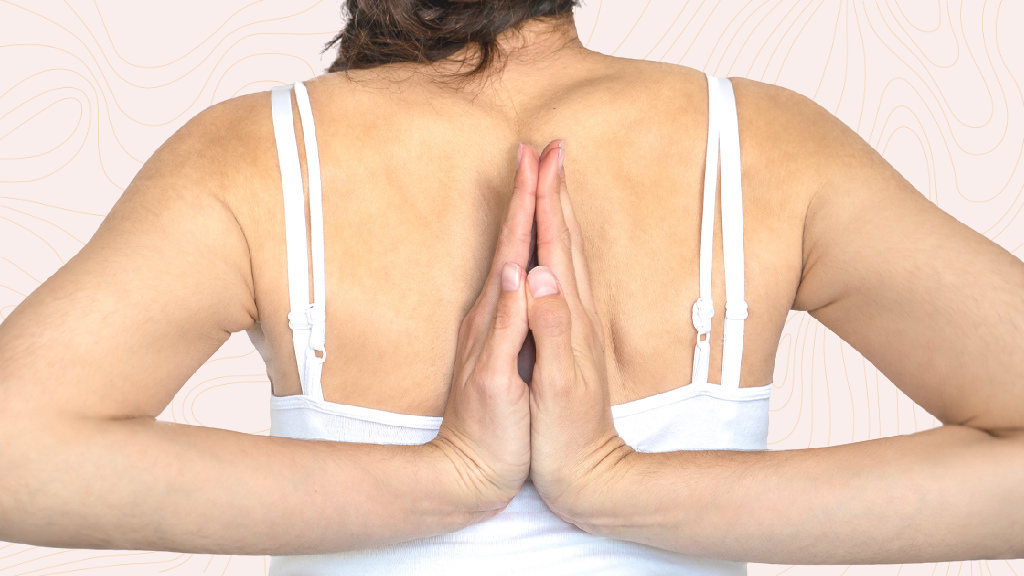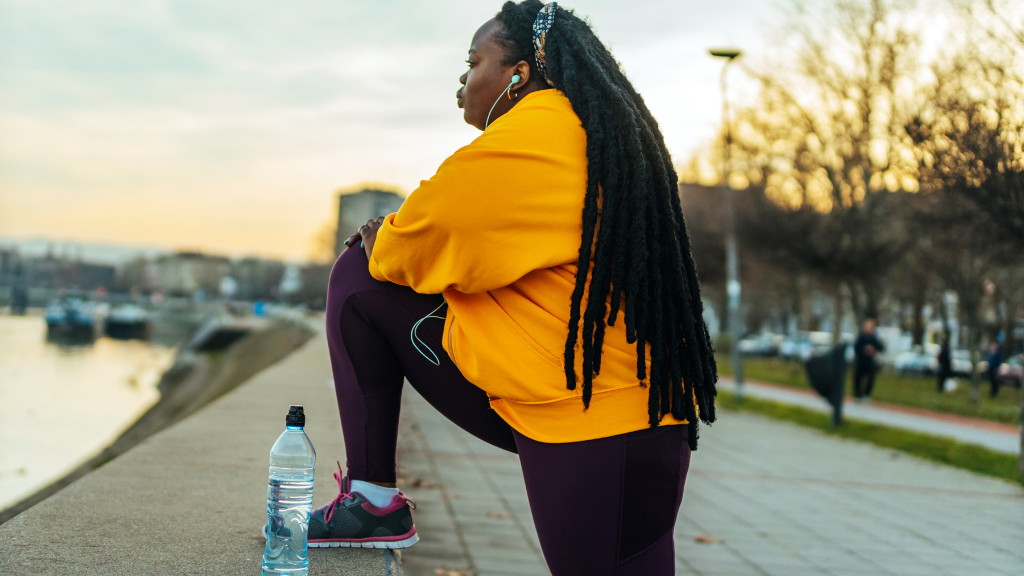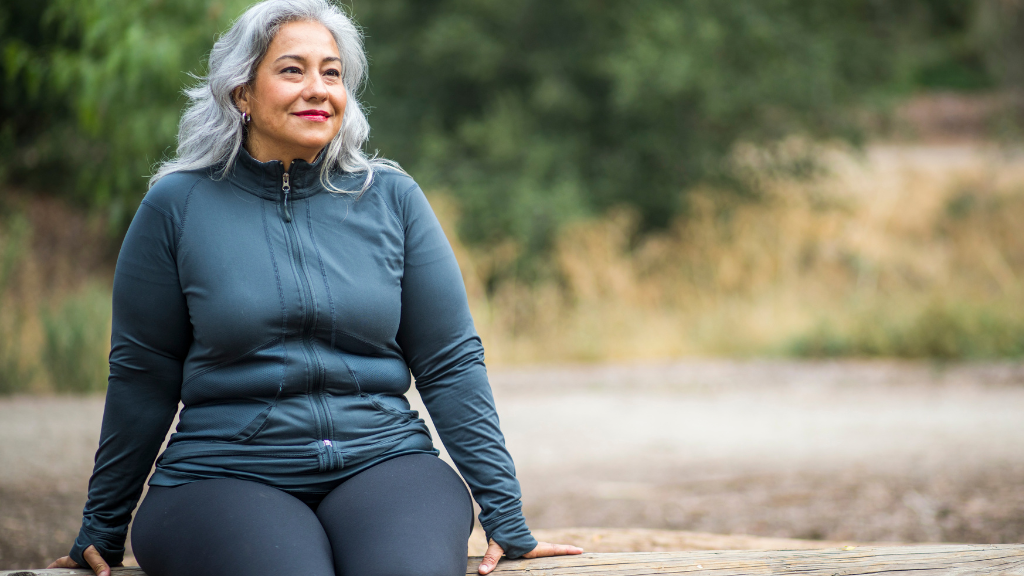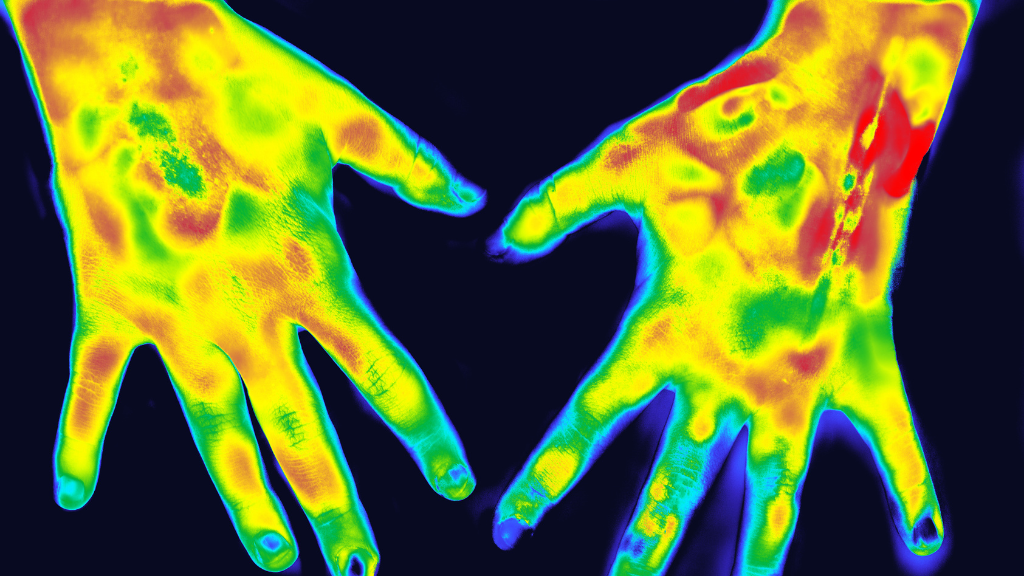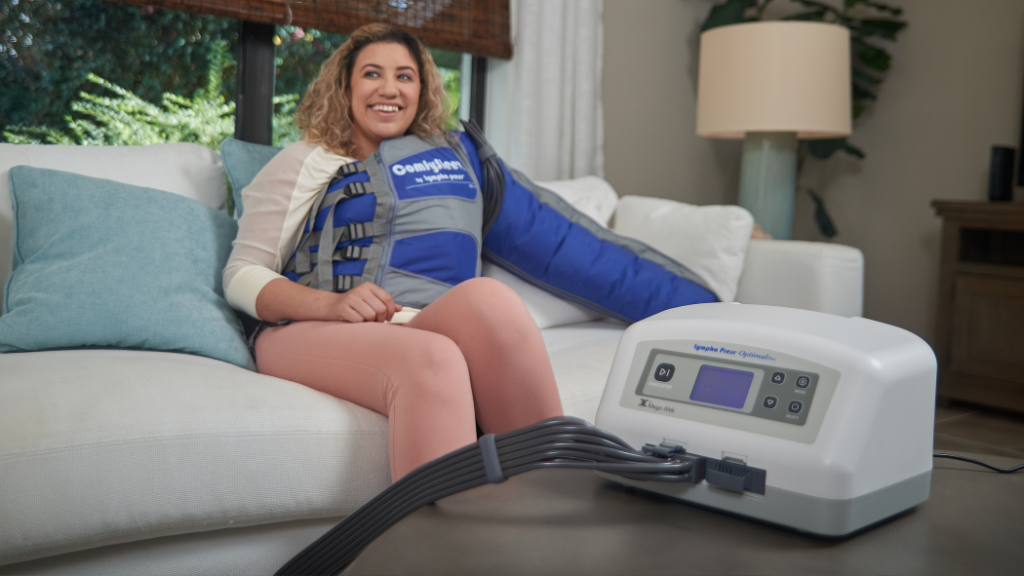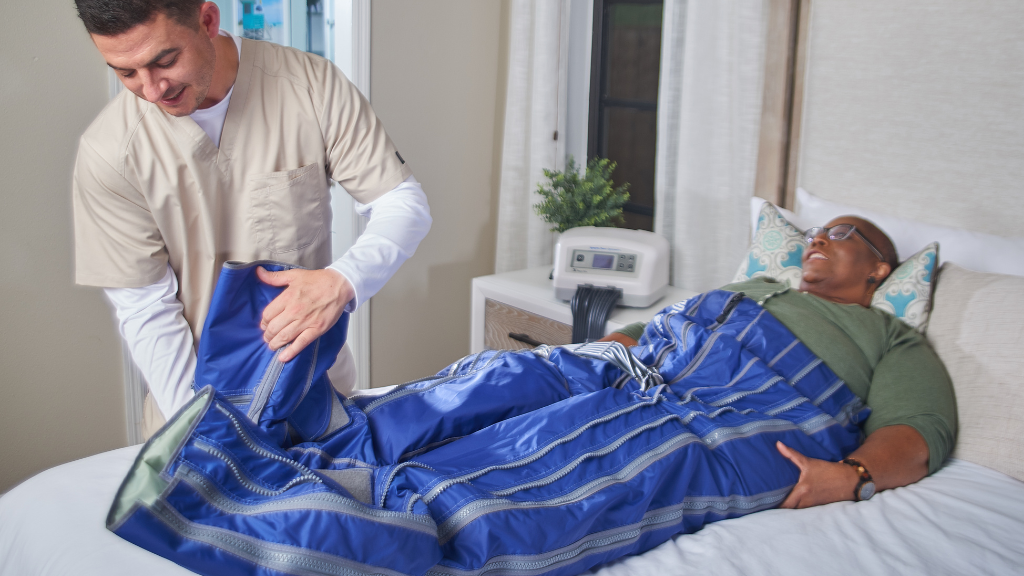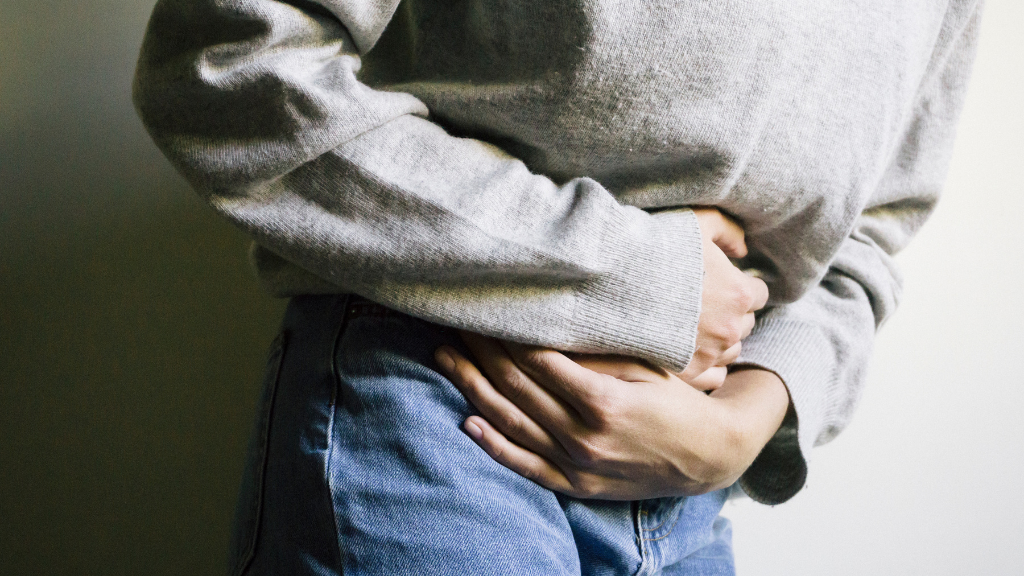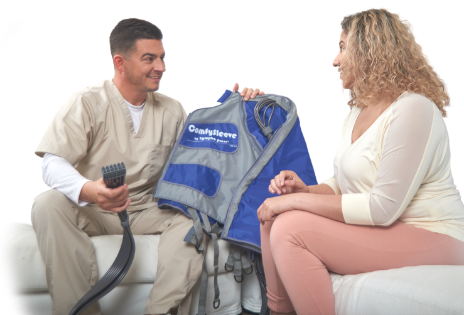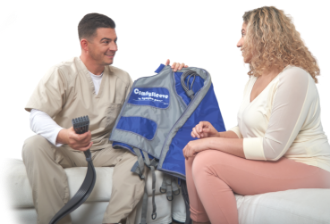By Karen Ashforth, OT, MS, CLT-LANA
This is a 20-minute read.
When a person is diagnosed with lipedema, they may encounter a frightening new landscape where a vast number of triggers can worsen their condition. I call these lipedema landmines.
Lipedema landmines can be caused by various syndromes, conditions, and situations that a patient might encounter as they build a personal roadmap to living with lipedema. It’s my mission to not only identify these potential landmines for patients and clinicians, but also to clarify the bigger picture of what they mean for treating lipedema effectively.
The goal of this article is to go into greater depth about lipedema treatment options and explore the latest research. Please refer to these previous presentations on lipedema to understand any necessary background information about lipedema.
Start With the Breath
I teach all of my patients to “start with the breath,” and it will definitely benefit you too. This is an exercise that invites you to approach a new situation by giving yourself a long exhale, then a good, full inhale. It’s best to close the mouth and breathe through the nose, allowing the tongue to relax on the roof of the mouth.
See if your body can find a relaxed position whether you are upright or lying down. Breathe all the way into your abdomen, and expand the rib cage in three dimensions. Then breathe all the air out. You may want to pause for a moment after each inhale and exhale. Repeat this a few times, and if you like, you can visualize pain and stress draining out of your body through your feet with each exhale.
Why start with the breath? This practice helps us to lower stress and connect to our bodies. It helps the autonomic nervous system. There is ample evidence that diaphragmatic breathing also helps swelling and pain. After starting with the breath, let’s move forward.
The Biggest Landmine: Lack of Education
Many medical providers have little education regarding lipedema. There is a growing movement to provide medical education and agreement regarding the diagnosis and treatment of lipedema. In my practice, I’ve found that many of my patients start by discovering online information about their conditions and then educate their health care providers.
The Symptom Triad that Often Occurs with Lipedema
As you familiarize yourself with the symptoms and comorbidities of lipedema, I suggest you also check out these three related conditions that are commonly found in people with lipedema and other fat-related disorders. These conditions are often called a “syndrome triad” because many of the symptoms overlap, and they frequently are present together. These conditions are Hypermobile Ehlers Danlos Syndrome (HEDS), Mast Cell Activation Syndromes (MCAS), and Postural Orthostatic Tachycardia Syndromes (POTS). If one or more of these are present, they can compound pain and inflammation, creating problems that manifest throughout the body.
Here are some reasons to be concerned about this triad as it relates to lipedema:
- HEDS: There is a greater than 50% incidence of hypermobility disorders in lipedema, most of which are associated with Hypermobile Ehlers Danlos Syndrome (Herbst 2015). Emerging research estimates incidence of hypermobility as even higher.
- MCAS: There is a growing recognition of the impact of elevated mast cells in lipedema tissue and how those cells influence many symptoms (Omaira 2015).
- POTS: POTS has been identified in fat disorders, especially in Dercum’s patients (Herbst 2019), and this syndrome frequently occurs with HEDS and MCAS.
Hypermobile Ehlers Danlos Syndrome (HEDS)
Hallmarks of this condition are fragile tissues and lax ligaments which create easy wounding, and loose joints, which can easily dislocate. This can create safety and injury risks, which can be compounded by other HEDS symptoms of postural dizziness, and difficulty recognizing where the body is in space.
Inflammation and pain can be present throughout the body or focused at a few areas. Digestive symptoms may be present, as well as issues due to delicate skin (Tinkle 2019).
Mast Cell Activation Syndromes (MCAS)
Mast cells exist throughout the body, and their function is to produce two substances: histamine and heparin. Histamine is active in immune defense and inflammation, and heparin acts as a blood thinner.
Mast cells can be activated through stress or disease, which increase their production and release. This leads to responses that can range from mild to life-threatening. Anaphylaxis is an example of an extreme shock reaction that can be triggered by insect venom, food, and some medications.
When mast cells are activated, symptoms can manifest in a number of different ways, and reactions can vary even day to day for the same person. Symptoms are often allergy-type reactions involving the eyes, nose, mouth, or throat. Activated mast cells can produce skin issues such as itching, hives, welts, rash, eczema, and flushing. Digestion problems can include irritable bowel syndrome, cramping, and gastroesophageal reflux disease (GERD). There can be impairments in body function such as difficulty regulating body temperature, and/or a change in heart rate or blood pressure. Mast cells can affect thinking and mood, creating fatigue and brain fog (Afrin 2020). There is currently a lot of buzz around elevated mast cells being linked to long-haul COVID (Weinstock 2021).
Postural Orthostatic Tachycardia Syndrome (POTS)
POTS is associated with hormones and histamines, primarily impacting women between the ages of 15 and 50. It is also known as dysautonomia due to the influence of the autonomic nervous system.
POTS involves low blood volume and impacts how the veins return blood to the heart, which in turn triggers an increase in heart rate when in an upright position. The difference can be 30 beats per minute in adults and 40 beats per minute in adolescents. Other common symptoms can include migraines, dizziness and fainting, fatigue, decreased activity tolerance, pain, cognitive and sleep disturbances, skin irritation, and digestive issues. (Verino 2021, Reilly 2020).
These are very brief summaries of the conditions in this syndrome triad; for more detailed information, I recommend viewing my earlier webinar, “Why Do Some of My Patients Never Fully Get Better? The Importance of Connective Tissue and Dysautonomia Syndromes in Lymphedema and Lipedema Treatment.”
Potential Treatment Landmines
There are a number of therapeutic approaches that need to be modified or avoided with people who have lipedema and one or more conditions in the symptom triad.
Positioning the body is important during bandaging or any type of manual therapy, such as manual lymphatic drainage MLD (manual lymphatic drainage). Therapists need to be mindful when treating hypermobile patients to support the joints properly to prevent potential dislocation. For patients with POTS, transitions from sitting or standing to lying down should be approached gently because people with orthostatic issues have an increased risk of fainting or passing out with changes of posture.
Skin Complications with Lipedema
Lipedema is associated with easy bruising, and all of the syndromes discussed here come with skin issues which can aggravate skin irritation during treatments. Clinicians should be aware of precautions and contraindications for positive and negative pressure treatments and start slowly, monitoring the skin before, during, and afterwards (Cheatham 2019, Chirali 2014).
Individuals with HEDS and MCAS are more likely to have skin reactions to tape, and elastic taping may not be well tolerated. It is recommended that a small test tape patch should always be applied for a 24-hour period prior to doing a full taping treatment (Kase 2013).
Sensitivity to Scents
It is important to know that people with mast cell disorders can also have chemical sensitivities, even to the point of creating potential histamine and anaphylactic reactions. Caution needs to be used with latex products, which can include gloves, elastic exercise bands, and even compression garments (Payne 2004).
Most hospitals and clinics already discourage the use of perfumes and aftershave products to avoid aggravating symptoms in patients with respiratory issues. But some people with mast cell disorders can have such extreme sensitivities that they can react to clothing laundered with scented detergents or dryer sheets.
Essential oils have become popular as healing modalities, and if used around people who have reactions to scents, the oils must be generously diluted, or not used at all (Jennings 2021).
The Landmine of Exercise
Exercise comes with both benefits and risks. It promotes emotional well-being and weight management, but there are factors to consider when choosing an exercise program.
Walking and water-based activities are often recommended, and compression may need to be worn in land-based exercise because the increased blood flow during exercise can produce increased swelling. A physical or occupational therapist should be consulted to ensure exercise is modified for increased safety when there are joint and ligament issues, mobility problems, an abnormal gait, large lobules, or tissue masses (Hardy 2017).
Vibration plates and platforms are very popular for lipedema and can offer a myriad of benefits from decongestion to pain relief. However, they should be used cautiously or not at all if certain other conditions are present (Merriman 2009). For those who have trouble with balance or joint stability while standing on a vibration plate, I often recommend using it in a seated position or even lying on the floor with feet on the vibration platform.
Hypermobility can create joint instability and increased muscle spasms. This often leads to poor body posture, which in turn can cause fatigue and pain. Yoga has been known to create injuries in people with HEDS (Pereira 2021). For this reason, any stretching exercise must be approached with caution and under the guidance of an experienced professional. A specialized core strengthening exercise program can help prevent and even break the injury cycles that are common in hypermobility. Proper footwear or even splinting might be needed to support the joints during exercise (Keer 2011).
Exercise is beneficial in decreasing mast cell activity (Bayat 2021), but those with MCAS may be prone to exercise-induced complications like bronchoconstriction and asthma. In these cases, people need to use medication to keep breathing airways open before exercising (Klain 2022). For those with POTS, it’s especially essential to teach diaphragmatic breathing to help the blood flow from the legs back to the heart. Supervised training is important when there is deconditioning. Therapy can also help increase tolerance of being upright and prevent the risk of falling (Fu 2018).
Dietary and Gut Landmines
The current consensus for diet and lipedema is a preference for whole foods that are enzyme-rich and low in carbohydrates. Ketogenic diets can be beneficial, as can certain supplements and medications (Herbst 2021).
All three conditions in the syndrome triad can cause digestive problems and can interfere with the speed with which food moves through the gut. In many cases, it is important to get a specialized physician involved to discuss a treatment plan.
There is a high incidence of digestion problems in HEDS that can even cause chronic diarrhea or constipation (Alomari 2020). MCAS can cause alterations in the gut microbiome that impact the GI tract. This could call for restricting certain foods and use of specific medications (Weinstock 2021). With POTS, there can be a juggling act between maintaining adequate blood volume by increasing water intake while monitoring sodium intake. When our patients have swelling, we usually caution about salt intake because many people react to salt with more swelling. However, those with POTS often need additional salt, and that need must be balanced to not trigger swelling (Do 2021, Mehr 2018).
Pelvic Floor Issues
The pelvic floor is currently a hot topic in the lipedema world. But what is it?
The pelvic floor is composed of the muscles that support the abdominal organs, and it can be affected by trauma such as surgical damage. It can also be impacted by childbirth, weakness caused by the aging process, and muscle spasms due to stress. Pelvic floor issues can include bowel and bladder incontinence, prolapse, low back pain, and sexual dysfunction.
Strengthening the pelvic floor muscles is recommended for people with lipedema (Herbst 2021). If HEDS or MCAS is present, it’s common to have organ prolapse and pelvic pain (Ali 2020, Zhao 2020). Women with POTS tend to have more urinary problems, menstrual irregularities, and pelvic pain and inflammation due to hormonal fluctuations (Tailor 2021).
Fortunately, many symptoms can be improved by working with a physical or occupational therapist who has specialized training in the pelvic floor. The ideal would be to find a lymphedema therapist with a pelvic floor background who can teach strengthening, relaxation, and coordination exercises. Manual therapy is helpful for treating muscle spasms and shortened tissues. Biofeedback and electrical stimulation are often effective with reducing pain and rebalancing the pelvic area (Wallace 2020).
Surgical Complication Landmines
Before undergoing any type of surgery, it is important that those who have lipo-lymphedema first complete an intensive CDT reduction phase. Problems with veins should be taken care of, and a duplex ultrasound study should be done. Precautions should be taken to avoid the risk of anemia with large areas of liposuction, and overnight medical observation may also be necessary. Pneumatic compression and early mobilization are helpful in lowering the risk of post-surgical blood clots (Herbst 2021).
The amount of anesthesia needed may differ in those who have HEDS. Those with hypermobility need special positioning during surgery to prevent joint dislocation or undue pressure on skin, blood vessels, and organs (Jacobs 2018). Individuals with MCAS need to avoid certain drugs such as NSAIDS and may also need more aggressive multi-drug therapy prior to an invasive procedure. Pre-surgical counseling can help decrease emotional triggers and minimize severe physical symptoms post-surgery (Kumaraswami 2018). Although fasting is typically ordered before surgery, individuals with POTS are more likely to become dehydrated. This can affect blood pressure adversely, and there may be a need for IV fluids and vasopressor medication. POTS carries increased risk of post-surgical deconditioning, and a therapist-supervised exercise program can be helpful (Ruzieh 2018).
The Minefield of Pain
Finally, I’d like to create more awareness about pain with lipedema, and how it might be increased when HEDS, MCAS, and/or POTS is also present. It’s well known in lipedema literature that the tissues and nodules of lipedema are often painful to the touch; however, causes of this pain can be unclear. The inflammatory process of lipedema shares many characteristics of and can be misdiagnosed as fibromyalgia (Agnst 2021).
Local and widespread generalized body pain is prevalent in 90% of people with HEDS. It may also be experienced as fatigue, headaches, migraines, or gastrointestinal pain. (Chopra 2017).
Pain is also a very common symptom in MCAS, manifesting as headaches, abdominal cramping, muscle aches, or neurogenic inflammation where the nerves have become inflamed. The use of non-steroidal, anti-inflammatory pain medication must be used cautiously because it can stimulate overproduction of mast cell activity (Gupta 2018).
There’s a well-known overlap between POTS and chronic fatigue, and many experience migraines and gastrointestinal pain. Unfortunately, many conventional pain treatments can worsen POTS symptoms (Cook 2018).
Avoiding Lipedema Landmines
To summarize, always keep in mind that each individual has their own unique landmines that they may encounter when living with lipedema. Knowledge is power! This means education for both healthcare professionals and for patients. It is also important for patients to have good self-advocacy. The more we all know about what works and what doesn’t work, the better the treatment will be.
As I like to tell my patients, I want to help you put your symptoms in remission so you can have a much happier and more functional life. The highest goal is always to turn symptoms around, to prevent progression, and to seek the most positive possible outcomes.
About Karen Ashforth
Karen Ashforth, MS, OTR/L, CLT-LANA has been an occupational therapist for more than 40 years. Specializing as a board-certified hand therapist led to her interest in lymphedema and lipedema nearly 20 years ago. Karen’s passions are in equipment innovation and development, treatment of underlying fibrosis and inflammation, and assessment of complex and challenging cases. She is considered an expert in the clinical use of pneumatic compression and has participated in the development of numerous devices and appliances. Karen frequently speaks in academic, clinical, and professional settings and performs clinical research that she presents and publishes nationally and internationally. Karen has a lymphedema and lipedema practice at a hospital-based outpatient clinic in Stockton, California and has a telehealth private-pay consultation practice at www.karenashforth.com. She is also an adjunct faculty member with the University of the Pacific in the Doctoral Physical Therapy Program.
About Lympha Press
Lympha Press addresses living with lymphatic disorders by offering devices that improve lymphatic fluid flow within the body. If you’re a doctor or patient with concerns about lipedema or lymphedema treatment, please take a look at the innovative therapy options from Lympha Press. Our products offer significant symptom relief and are backed by clinical studies.
References
Alomari, M., Hitawala, A., Chadalavada, P., et al (2020). Prevalence and predictors of gastrointestinal dysmotility in patients with hypermobile Ehlers-Danlos syndrome: a tertiary care center experience. Cureus, 12(4).
Afrin, L. B., Ackerley, M. B., Bluestein, L. S., et al (2021). Diagnosis of mast cell activation syndrome: a global “consensus-2”. Diagnosis, 8(2), 137-152.
Ali, A., Andrzejowski, P., Kanakaris, N. K., & Giannoudis, P. V. (2020). Pelvic girdle pain, hypermobility spectrum disorder and hypermobility-type ehlers-danlos syndrome: a narrative literature review. Journal of Clinical Medicine, 9(12), 3992.
Angst, F., Benz, T., Lehmann, S., Sandor, P., & Wagner, S. (2021). Common and contrasting characteristics of the chronic soft-tissue pain conditions fibromyalgia and lipedema. Journal of Pain Research, 14, 2931.
Bayat, M., Chien, S., & Chehelcheraghi, F. (2021). Aerobic Exercise-Assisted Cardiac Regeneration by Inhibiting Tryptase Release in Mast Cells after Myocardial Infarction. BioMed research international, 2021.
Cheatham, S. W., Baker, R., & Kreiswirth, E. (2019). Instrument assisted soft-tissue mobilization: a commentary on clinical practice guidelines for rehabilitation professionals. International journal of sports physical therapy, 14(4), 670.
Chirali, I. Z. (2014). Traditional Chinese Medicine Cupping Therapy-E-Book. Elsevier Health Sciences.
Chopra, P., Tinkle, B., Hamonet, C., et al (2017, March). Pain management in the Ehlers–Danlos syndromes. In American Journal of Medical Genetics Part C: Seminars in Medical Genetics (Vol. 175, No. 1, pp. 212-219).
Cook Jr, G. A., & Sandroni, P. (2018). Management of headache and chronic pain in POTS. Autonomic Neuroscience, 215, 37-45.
Do, T., Diamond, S., Green, C., & Warren, M. (2021). Nutritional Implications of Patients with Dysautonomia and Hypermobility Syndromes. Current Nutrition Reports, 1-10.
Fu, Q., & Levine, B. D. (2018). Exercise and non-pharmacological treatment of POTS. Autonomic Neuroscience, 215, 20-27.
Ghods, M., Georgiou, I., Schmidt, J., & Kruppa, P. (2020). Disease progression and comorbidities in lipedema patients: A 10‐year retrospective analysis. Dermatologic Therapy, 33(6), e14534.
Gupta, K., & Harvima, I. T. (2018). Mast cell‐neural interactions contribute to pain and itch. Immunological reviews, 282(1), 168-187.
Hardy, D., & Williams, A. (2017). Best practice guidelines for the management of lipoedema. British Journal of Community Nursing, 22(Sup10), S44-S48.
Herbst KL (2019) Subcutaneous adipose tissue diseases: Dercum disease, lipedema, familial multiple lipomatosis and Madelung disease. In: J Purnell and L Perreault (eds) Endotext. Massachusetts: MDText.com, 2019.
Herbst, K. L., Mirkovskaya, L., Bharhagava, A., Chava, Y., & Te, C. H. T. (2015). Lipedema fat and signs and symptoms of illness, increase with advancing stage. Archives of medicine, 7(4), 0-0.
Jacobs, J. W. G., Cornelissens, L. J. M., & Veenhuizen, M. C. (Eds.). (2018). Ehlers-Danlos syndrome: a multidisciplinary approach. IOS Press.
Jennings, S. V., Slee, V. M., Finnerty, C. C., Hempstead, J. B., & Bowman, A. S. (2021). Symptoms of mast cell activation: The patient perspective. Annals of Allergy, Asthma & Immunology, 127(4), 407-409.
Kase, K., Wallace, J., Kase, T. (2013). Clinical therapeutic applications of the Kinesio Taping ® Method, Third edition. Kinesio.
Keer, R., & Simmonds, J. (2011). Joint protection and physical rehabilitation of the adult with hypermobility syndrome. Current opinion in rheumatology, 23(2), 131-136.
Klain, A., Indolfi, C., Dinardo, G., Contieri, M., Decimo, F., & Miraglia Del Giudice, M. (2022). Exercise-induced bronchoconstriction in children. Frontiers in Medicine, 8, 814976.
Kumaraswami, S., & Farkas, G. (2018). Management of a patient with mast cell activation syndrome: an anesthesiologist’s experience. Case Reports in Anesthesiology, 2018.
Mehr, S. E., Barbul, A., & Shibao, C. A. (2018). Gastrointestinal symptoms in postural tachycardia syndrome: a systematic review. Clinical Autonomic Research, 28(4), 411-421.
Merriman, H., & Jackson, K. (2009). The effects of whole-body vibration training in aging adults: a systematic review. Journal of Geriatric Physical Therapy, 32(3), 134-145.
Omaira, M., Mehrotra, A., Fankhauser, M. J., Hrinczenko, B., & Dimitrov, N. V. (2015). Lipedema: a clinical challenge-revisited. British Journal of Medicine and Medical Research, 5(11), 1328.
Payne, V., & Kam, P. C. A. (2004). Mast cell tryptase: a review of its physiology and clinical significance. Anaesthesia, 59(7), 695-703.
Pereira, C., & Bridges, A. (2021). Too Flexible to Feel Good: A Practical Roadmap to Managing Hypermobility. Simon and Schuster.
Reilly, C. C., Floyd, S. V., Lee, K., Warwick, G., James, S., Gall, N., & Rafferty, G. F. (2020). Breathlessness and dysfunctional breathing in patients with postural orthostatic tachycardia syndrome (POTS): the impact of a physiotherapy intervention. Autonomic Neuroscience, 223, 102601.
Ruzieh, M., Dziuba, M., Hofmann, J. P., & Grubb, B. P. (2018). Surgical and dental considerations in patients with postural tachycardia syndrome. Autonomic Neuroscience: Basic and Clinical, 215, 119-120.
Tailor, V., & Khullar, V. (2021). Gynaecological considerations in POTS. In Postural Tachycardia Syndrome (pp. 141-152). Springer, Cham.
Tailor, V., & Khullar, V. (2021). Urological Considerations in PoTS. In Postural Tachycardia Syndrome (pp. 125-140). Springer, Cham.
Taylor NE, Foster WC, Wick MR, Patterson JW. (2004). Tumefactive lipedema with pseudoxanthoma elasticum-like microscopic changes. J Cutan Pathol. Feb;31(2):205-9. doi: 10.1111/j.0303-6987.2004.00168.x. PMID: 14690469.
Tinkle, B. T., & Levy, H. P. (2019). Symptomatic joint hypermobility: the hypermobile type of Ehlers-Danlos syndrome and the hypermobility spectrum disorders. Medical Clinics, 103(6), 1021-1033.
Vernino, S., Bourne, K. M., Stiles, L. E., Grubb, B. P., et al. (2021). Postural orthostatic tachycardia syndrome (POTS): State of the science and clinical care from a 2019 National Institutes of Health Expert Consensus Meeting-Part 1. Autonomic Neuroscience, 235, 102828.
Wallace, S. L., Miller, L. D., & Mishra, K. (2019). Pelvic floor physical therapy in the treatment of pelvic floor dysfunction in women. Current Opinion in Obstetrics and Gynecology, 31(6), 485-493.
Weinstock, L. B., Pace, L. A., Rezaie, A., Afrin, L. B., & Molderings, G. J. (2021). Mast cell activation syndrome: a primer for the gastroenterologist. Digestive Diseases and Sciences, 66(4), 965-982.
Wechsler, J. B., Butuci, M., Wong, A., et al (2021). Mast cell activation is associated with post-acute COVID-19 syndrome. Allergy, 77(4), 1288-1291.
Zhao, Y., Xia, Z., Lin, T., & Yin, Y. (2020). Significance of hub genes and immune cell infiltration identified by bioinformatics analysis in pelvic organ prolapse. PeerJ, 8, e9773.
